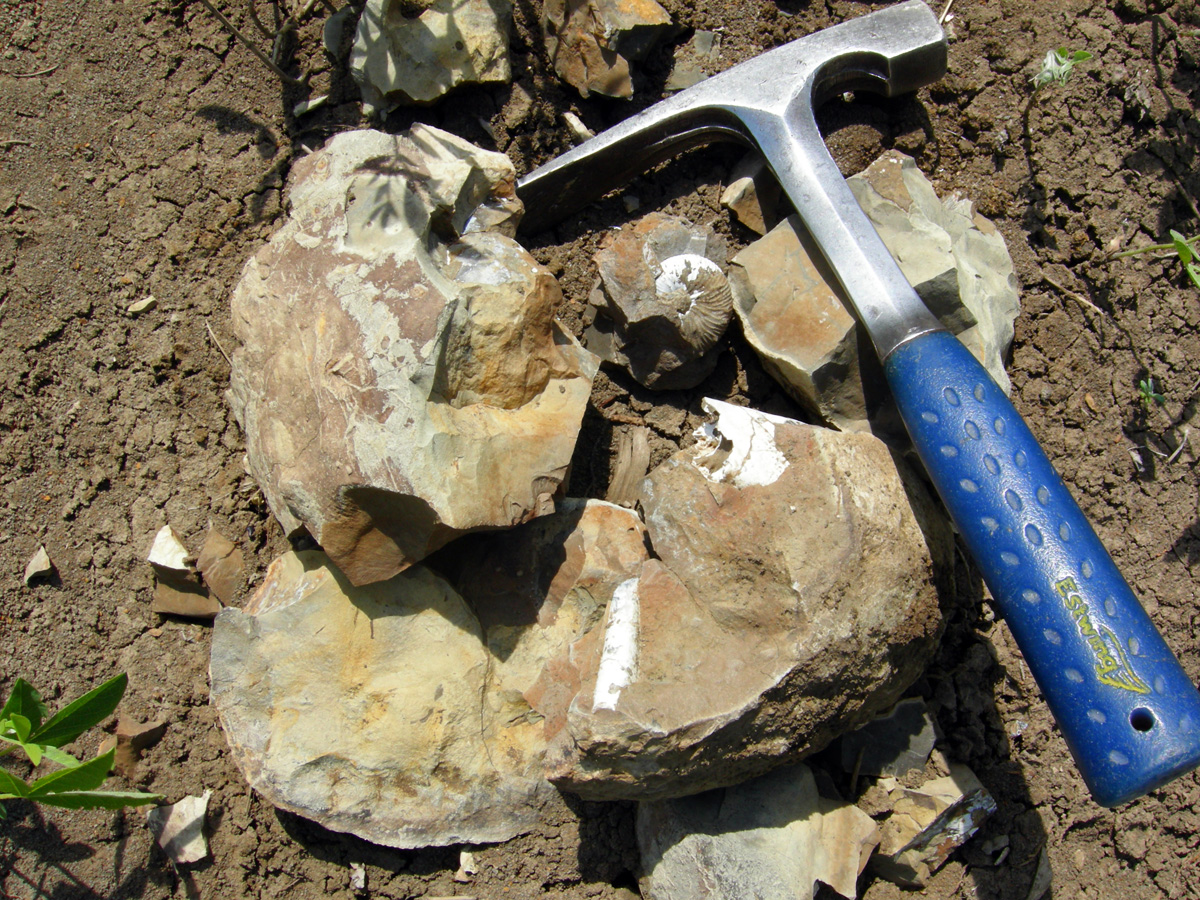Geologist's hammer on:
[Wikipedia]
[Google]
[Amazon]
 A geologist's hammer, rock hammer, rock pick, geological pick, or informally geo pick, is a hammer used for splitting and breaking rocks. In field geology, they are used to obtain a fresh surface of a rock to determine its composition, bedding orientation, nature, mineralogy, history, and field estimate of rock strength. In
A geologist's hammer, rock hammer, rock pick, geological pick, or informally geo pick, is a hammer used for splitting and breaking rocks. In field geology, they are used to obtain a fresh surface of a rock to determine its composition, bedding orientation, nature, mineralogy, history, and field estimate of rock strength. In

fossil
A fossil (from Classical Latin , ) is any preserved remains, impression, or trace of any once-living thing from a past geological age. Examples include bones, shells, exoskeletons, stone imprints of animals or microbes, objects preserved ...
and mineral collecting, they are employed to break rocks with the aim of revealing specimens inside. Geologist's hammers are also sometimes used for scale in a photograph. The hammer also serves as an extension of the senses, permitting the geologist to perceive the rock's granularity, soundness, and resistance to fracturing that may be relevant to its use or identification.
Shape
Geologist's hammers, as with most hammers, have two heads, one on either side. Most commonly, the tool consists of a flat square head on one end, with either a chisel or a pick head at the other end.Basic Geological Mapping, John Barnes, Third Ed., Wiley, Chichester, 1995 *A corner or edge of the flat head is used to deliver a blow to a rock with the intention of splitting it. Specimens or samples can be trimmed to remove sharp corners or reduce them in size. *A chisel head (pictured) is useful for clearing loose material and vegetation from exposures, or creating exposures through digging. It is sometimes (at risk of damage) used to pry open fissures. Some rocks can be easily split, like slate or shale, to reveal any fossils. *A pick head, which terminates in a sharp point to deliver maximum pressure, is often preferred for harder rocks. A geologist's hammer bearing a pick end is often referred to as a rock pick, geological pick, or prospecting pick instead of a geologist's hammer.Construction
The effective power of a geologist's hammer is mainly considered to be a reflection of its head weight and handle length. Head weight may range from or less on a small hammer—such as would generally be used for casual use or by children—to and greater. A hammer of has been described as most useful,Basic Geological Mapping, John Barnes, Third Ed., Wiley, Chichester, 1995 althoughmetamorphic
Metamorphic rocks arise from the transformation of existing rock to new types of rock in a process called metamorphism. The original rock (protolith) is subjected to temperatures greater than and, often, elevated pressure of or more, causi ...
or igneous
Igneous rock (derived from the Latin word ''ignis'' meaning fire), or magmatic rock, is one of the three main rock types, the others being sedimentary and metamorphic. Igneous rock is formed through the cooling and solidification of magma or ...
rocks often require heavier hammers for a more powerful blow. In such cases geologists may prefer a sledge
A sled, skid, sledge, or sleigh is a land vehicle that slides across a surface, usually of ice or snow. It is built with either a smooth underside or a separate body supported by two or more smooth, relatively narrow, longitudinal runners s ...
or bricklayer's "club" hammer.
The best geologist's hammers are forged from one piece of hardened steel
The term hardened steel is often used for a medium or high carbon steel that has been given heat treatment and then quenching followed by tempering. The quenching results in the formation of metastable martensite, the fraction of which is reduced ...
, which renders them sturdy and long-lasting. Alternatives such as tubular- and wooden-shafted hammers are more commonly used, in part due to their lower cost. Such alternative handles sacrifice strength and make the hammer unsuitable for high-strain activities such as prying.
The form and weighting of the shaft defines the balance, which itself defines the ease, efficiency, and comfort of use of the geologist's hammer.
References
{{reflist Hammers Geological tools ro:Piolet